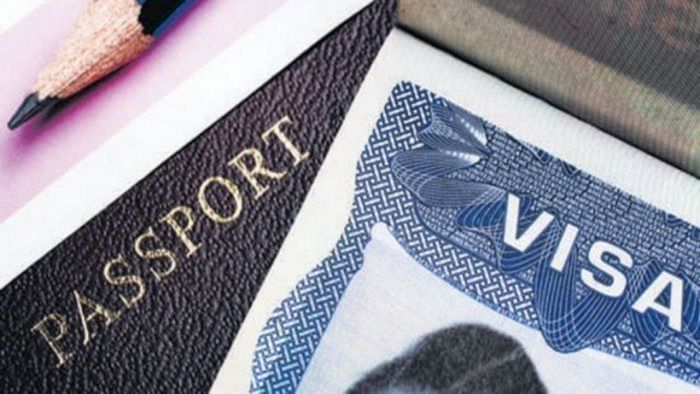
China has issued ‘stapled visas’ once again to three sportspersons of Arunachal Pradesh to assert its territorial claim over the northeastern frontier state of India. Anirban Bhaumik explains why Beijing has not been issuing regular visas to some of the citizens of India and how New Delhi has been responding to such needling.
What is a ‘stapled visa’?
When a government of a country issues a visa to allow a foreigner to visit the territory under its control, it is generally pasted on one of the pages of the passport issued by the government of the country that the foreign visitor hails from. But China has been issuing ‘stapled visas’ to citizens of India, living in Arunachal Pradesh, Ladakh and Jammu and Kashmir. The stapled visa is stapled or attached with a pin, and not pasted, on the page of the passport.
Why has China been issuing ‘stapled visa’ to citizens of India?
China has been issuing ‘stapled visas’ to people from Arunachal Pradesh, Ladakh and Jammu and Kashmir in order to avoid recognizing them as citizens of India. The Government of India issues passports to the citizens of the country. So, if Beijing issues a regular visa pasted on the page of the passport issued by New Delhi, it would be tantamount to China recognizing the status of the traveller as a citizen of India, even if the person hails from Arunachal Pradesh, Ladakh and J&K.
Why is China not ready to recognise a visa applicant from Arunachal Pradesh, Ladakh and J&K as a citizen of India?
Beijing claims almost the entire state of – over 80000 sq km of area – Arunachal Pradesh of India as a part of the territory of China and calls it Zangnan or south Tibet. It issues ‘stapled visas’ to the people of Arunachal Pradesh to assert that the land and the people of Arunachal Pradesh are its own and that they do not belong to India.
Beijing also endorses its “all-weather friend” Islamabad’s claim that J&K was a disputed territory between Pakistan and India. After Prime Minister Narendra Modi’s government in New Delhi in August 2019 had stripped J&K of its special status and moved to reorganise the erstwhile state into two union territories, China had joined Pakistan to launch a global campaign against India, protesting against what they had called a unilateral move on a “disputed territory”.
New Delhi, however, rejects the claims of Beijing and Islamabad and maintains that J&K, including the areas under illegal occupation of Pakistan and the areas Pakistan ceded to China in 1963, Ladakh and Arunachal Pradesh are integral parts of India.
India claims that China is illegally occupying about 38,000 sq km of its territory in Aksai Chin, which borders eastern Ladakh. China also claims nearly 2000 sq km of land in Himachal Pradesh and Uttarakhand of India.
What are the other means China adopts to assert its claim on the territories of India?
Apart from issuing ‘stapled visas’ and the aggressive deployment of PLA troops along the Line of Actual Control (LAC), the de facto boundary between the two neighbours, China has also been resorting to several other ways to assert its claims on territories of India – be it by showing the territories of India as its own or disputed in the official maps or by assigning Chinese and Tibetan names to areas – particularly in Arunachal Pradesh – it has been eyeing.
How has New Delhi been reacting to China’s move to issue ‘stapled visas’ to the citizens of India living in Arunachal Pradesh, J&K and Ladakh?
After Beijing issued ‘stapled visas’ to three sportspersons from Arunachal Pradesh of India for visiting China to participate in the World University Games, New Delhi recently lodged a strong protest with the communist country’s government and asserted that it reserved the right to “suitably respond” to the “unacceptable” move by the communist nation. New Delhi decided against sending India’s wushu team which was to leave on July 27 for Chengdu in China to take part in the World University Games. India in the past also did not allow any of its citizens to travel to China on ‘stapled visas’.
After Beijing started issuing ‘stapled visas’ to people living in Arunachal Pradesh, Ladakh and J&K of India in 2008 and 2009, New Delhi had in 2010 dropped words of its support to China’s stand on Tibet and Taiwan from the joint communiqué issued after the parleys between the then Prime Minister Manmohan Singh and the Chinese Premier Wen Jiabao. India had earlier been routinely recognising Tibet Autonomous Region as an integral part of China in all the joint declarations and other bilateral documents. India had also been routinely reaffirming its One-China policy, thus not recognizing the Republic of China or Taiwan as a separate nation other than the People’s Republic of China.
